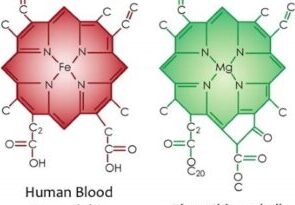How does handwashing kill Germs?
HEALTH
by Eli Rogers
With the outbreak of the new coronavirus (COVID-19), it is recommended to wash or sanitize our hands. Why is this so important? How does handwashing and sanitizing kill germs? Is one method better than the other?
Handwashing is important because it removes bacteria, viruses, and other contaminants from our hands. People touch their face hundreds of times per day: this contact brings  germs with it, which increases the risk of infection. The flow of water when we wash our hands helps to remove germs from our skin.
germs with it, which increases the risk of infection. The flow of water when we wash our hands helps to remove germs from our skin.
Then why is soap important? Our hands are naturally a bit greasy and oily; germs stick to the oils on our hands and do not wash off with water alone. Soap molecules are special because half of the molecule likes water and the other half likes oil. So, when we wash with soap and water, the soap grabs all of the oils (including all of the germs stuck in the oil), and carries them away with the water. Some types of germs are encased in oily sacs for protection; the oily part of the soap can tear these sacs apart and kill the germs. COVID-19 is one such germ, so it is especially vulnerable to soap and water.
Many people wonder about the use of hand sanitizer (such as Purell) if soap and water work so well. Hand sanitizer uses large amounts of alcohol to surround and penetrate the germs on our hands. When such high quantities of alcohol enter the germs, they destroy the germs’ internal machinery (such as proteins, DNA, and RNA), which cause the germs to die.
Therefore, soap/water and hand sanitizer serve different functions. Soap and water remove germs from our hands and can kill certain kinds of germs. Hand sanitizer can kill most germs, but it does not remove them. For this reason, either can be used against germs like COVID-19. Most health agencies recommend handwashing because it gets rid of dirt, metals, and germs. However, they say that hand sanitizer is okay to use if soap and water are not available.
For handwashing to be effective you should wet your hands and wrists, scrub for twenty seconds, rinse with water, and dry with air or a clean towel. Make sure to do this many times a day, especially after using the bathroom, coughing, blowing your nose, touching a pet, and touching any kind of trash. You should also wash your hands before and after preparing food, eating, treating a wound, and caring for anyone who is sick. You can find more information at the CDC website: https://www.cdc.gov/handwashing/index.html.
References:
Aiello, Allison & Larson, Elaine. “What is the evidence for a causal link between hygiene and infections?” The Lancet, Infectious Diseases, vol. 2(2). 1 February 2002, pp. 103-110. https://www.thelancet.com/journals/laninf/article/PIIS1473-3099(02)00184-6/fulltext
“Handwashing: Clean Hands Save Lives.” CDC (Centers for Disease Control and Prevention). Updated 14 January 2020. https://www.cdc.gov/handwashing/index.html.
Mathur, Purva. “Hand Hygiene: Back to the Basics of Infection Control.” Indian Journal of Medical Research, vol. 134(5). November, 2011, pp. 611-620. https://www.ncbi.nlm.nih.gov/pmc/articles/PMC3249958/.
Gold, Nina & Avva, Usha. “Alcohol Sanitizer.” StatPearls. Statpearls Publishing: Treasure Island, Florida. Updated February 2020. https://www.ncbi.nlm.nih.gov/books/NBK513254/
Thordarson, Pall. “The science of soap – here’s how it kills the coronavirus.” The Guardian, 12 March 2020. https://www.theguardian.com/commentisfree/2020/mar/12/science-soap-kills-coronavirus-alcohol-based-disinfectants
Kwok, Y. L., Gralton, J. & McLaws, M. L. “Face touching: a frequent habit that has implications for hand hygiene.” American Journal of Infection Control, vol. 43(2). February 2015, pp. 112-114. https://www.ncbi.nlm.nih.gov/pubmed/25637115.
Eli Rogers is from Colorado and was born to American parents. He graduated from the University of Rochester in New York with degrees in Molecular Genetics and French. He spent one-year teaching English at the University of Rennes in France and conducting epilepsy research at the Technion Institute in Israel. In the summer of 2019, he returned to Rochester to study medicine at the University of Rochester. He is a part of the Latino Health Pathway in which students study medical Spanish and health matters with a special emphasis on the Latinx community. He is an executive board member for the Latino Medical Student Association (LMSA) chapter at the University of Rochester.
